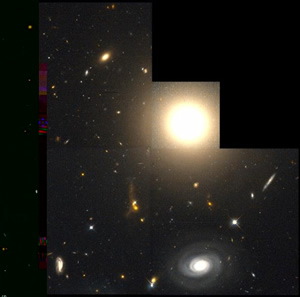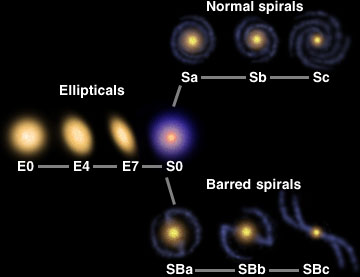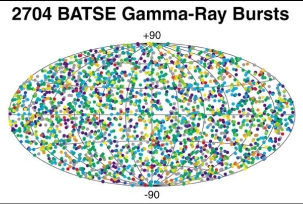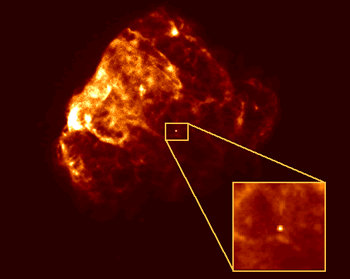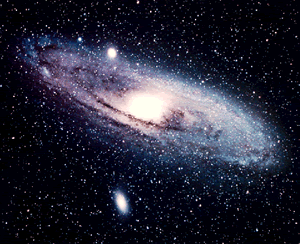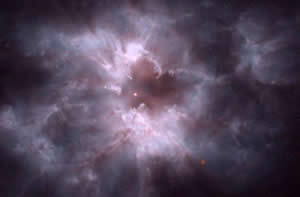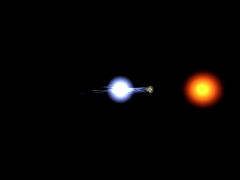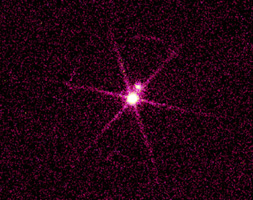Click on image for full size
Courtesy of NASA.
Large-Scale Structure: Your Place in the Universe
When we look out into the Universe we observe some rather remarkable structure. We have seen that stars cluster together to form galaxies. But galaxies also cluster together to form much larger structures. There are clusters of galaxies called Groups which contain 10's of galaxies. Our own galaxy, the Milky Way resides in such a group of about 30 galaxies, named the Local Group. The Local Group contains 3 large spirals: The Milky Way, The Andromeda Galaxy, and M33. The rest are all small galaxies (dwarf spheroidals and irregulars). The Local Group spans nearly 5 Million Light-Years of space.Additionally there are much larger clusters of galaxies containing anywhere from 50 - 1000's of galaxies. The closest cluster to us is the Virgo cluster, at a distance of about 50 Million Light-years. It spans 10 Million Light-years of space. The Coma Cluster, almost 300 Million Light-Years away, contains thousands of galaxies and spreads accross 20 Million Light-years of space. The average cluster contains hundreds of galaxies and spans 16 Million Light-years. The average distance between clusters is some tens of millions of Light-years.
Groups and Clusters cluster together to form even larger clusters known as Superclusters. The Local Group belongs to the Local Supercluster, whose center is at the Virgo Cluster. Superclusters, on average, span 100 Million Light-years of space. They often have flattened structures. In between Superclusters are enormous voids of space where there are almost no galaxies at all. These voids can be 100's of Light-years accross.
The Largest structures discovered in the Universe are systems of voids and clusters. At this scale the Universe takes on a foamy look with the voids appearing as great bubbles and galaxies lying along them in great filaments connecting Superclusters.


